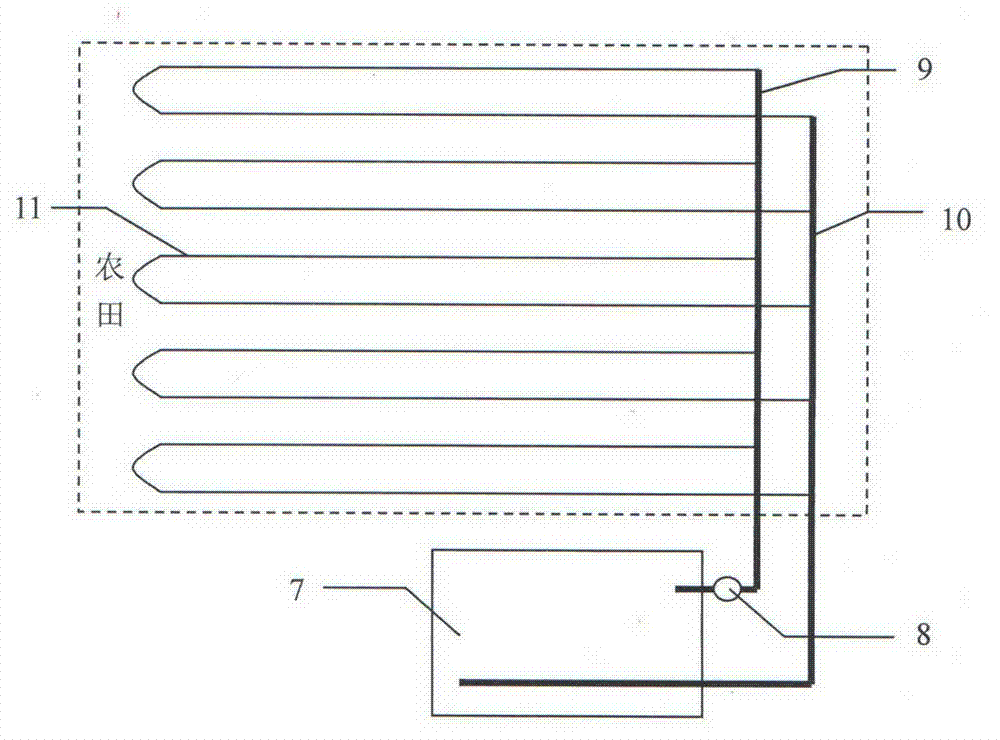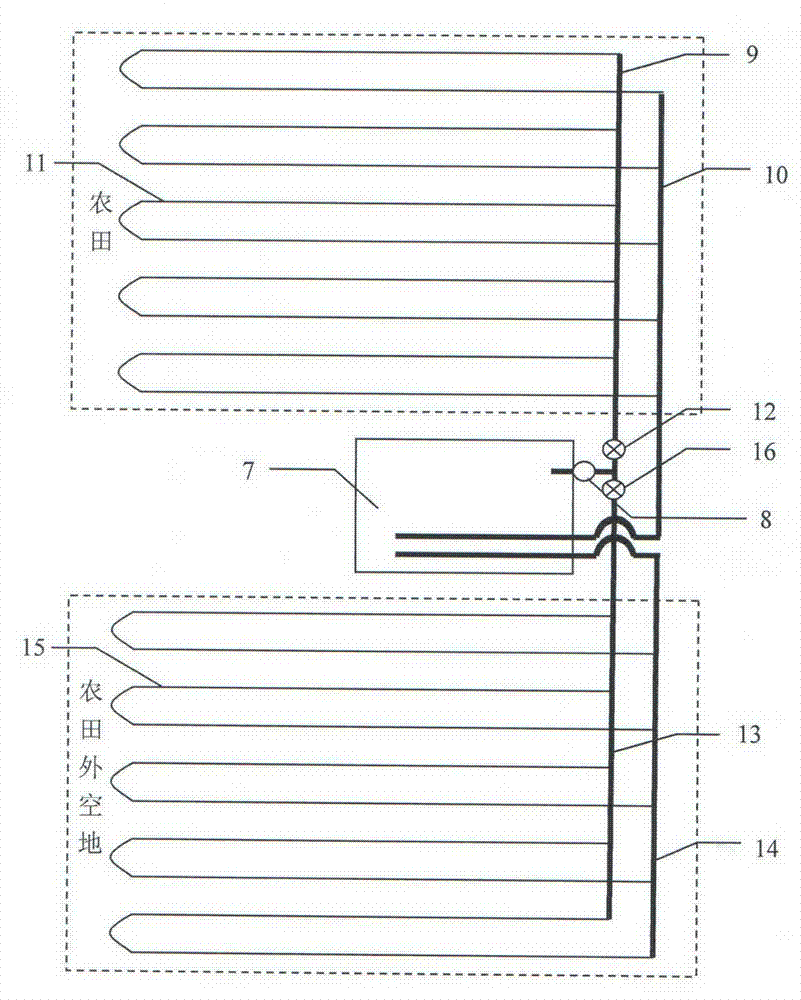A farmland microclimate intervention system using solar energy
A solar energy and microclimate technology, applied in the field of farmland meteorology, can solve the problems of affecting the growth and quality of crops, high construction and operation costs, and difficulty in large-scale promotion and application, and achieve low construction and operation maintenance costs, simple and convenient transformation, and sharing low cost effect
- Summary
- Abstract
- Description
- Claims
- Application Information
AI Technical Summary
Problems solved by technology
Method used
Image
Examples
Embodiment
[0028] In 2012, an experiment of farmland microclimate intervention using solar energy was carried out in the experimental field of Mosuowan Experimental Station (N44°51′55.95″E86°11′6.24″) in Shihezi, Xinjiang, which is located at the southern edge of the Gurbantunggut Desert , belongs to a typical dry continental climate, with a large temperature difference between day and night. The experimental area is 5 mu, and the planting crop is cotton, the variety is Xinluzao 26. The planting mode of one film and six rows of ultra-wide film is adopted, and the distance between plants and rows is configured as narrow rows of 10 cm, row width 66 cm, plant spacing 10 cm ( Figure 4 ), sowing on April 20, seedling emergence on May 1, and test facilities being set up on May 20. The specific operations are as follows:
[0029] Select the matching width of 15 meters for the drip irrigation system in the existing test field, 30 meters in length, and lay a layer of 15 cm thick rigid foam plast...
PUM
 Login to View More
Login to View More Abstract
Description
Claims
Application Information
 Login to View More
Login to View More - R&D
- Intellectual Property
- Life Sciences
- Materials
- Tech Scout
- Unparalleled Data Quality
- Higher Quality Content
- 60% Fewer Hallucinations
Browse by: Latest US Patents, China's latest patents, Technical Efficacy Thesaurus, Application Domain, Technology Topic, Popular Technical Reports.
© 2025 PatSnap. All rights reserved.Legal|Privacy policy|Modern Slavery Act Transparency Statement|Sitemap|About US| Contact US: help@patsnap.com



